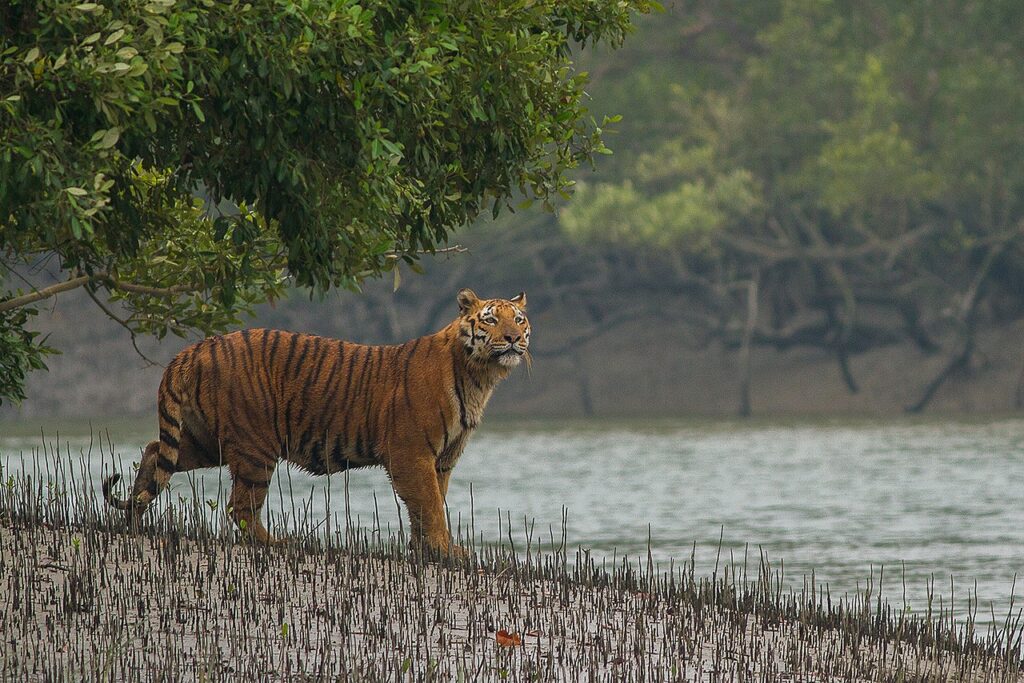Mangrove ecosystems are dynamic and complex system that is influenced by both the terrestrial and marine environment. Such areas where two different ecosystems transition are called ecotone and mangrove ecosystem is prime example of it. With over 70% of the Earth’s surface covered by oceans, it’s no surprise that some of the most diverse and valuable ecosystems can be found at the coastline.
Characteristics of Mangrove Ecosystems
One of the most important characteristics of mangrove ecosystems is their resilience. These ecosystems have evolved over millions of years to survive in harsh coastal environments, withstanding strong currents, high salinity, and regular flooding. They have also developed a range of adaptive strategies, such as prop roots and pneumatophores, that enable them to survive in anaerobic soils.
Importance of Mangroves
Mangrove ecosystems provide a range of benefits, including acting as natural buffers against storms and sea level rise, filtering pollutants from the water, and providing nursery habitats for fish and other marine species. They also provide valuable resources to humans, including timber, fuelwood, and non-timber forest products.
Mangrove forests nurture our estuaries and fuel our nature-based economies. One of the world’s most important ecosystems, healthy mangrove forests are hotspots of biodiversity, cornerstones of climate resilience and a source of livelihoods for coastal communities worldwide. They are carbon stores, fish factories, coastal defenses and more, conveying incalculable benefits to both people and the planet.
Mangrove forests also play a critical role in carbon sequestration, helping to mitigate the impacts of climate change. The dense vegetation of mangroves absorbs carbon dioxide from the atmosphere and stores it in their biomass and soils, making them important carbon sinks. In fact, mangrove forests are estimated to sequester up to four times more carbon per unit area than other tropical forests, making them an important tool for mitigating climate change.
Another significant benefit of mangrove forests is that they are able to filter pollutants from the water. The intricate root systems of mangroves act as natural filters, trapping and removing sediments, nutrients, and pollutants from the water. This helps to improve water quality and reduce the impacts of human activities on marine life.

Threats faced by Mangrove Ecosystems
Despite their importance, mangrove forests are under threat from a variety of human activities. Coastal development, deforestation, and climate change are among the biggest threats to these valuable ecosystems. Coastal development, such as the construction of marinas, resorts, and other infrastructure, can lead to habitat loss and fragmentation, disrupting the ecological functions of the mangrove forest. Deforestation for timber and fuelwood, as well as conversion to aquaculture and agriculture, also poses a significant threat to mangrove ecosystems, leading to habitat loss and reduced biodiversity. Climate change is causing sea levels to rise, which is threatening the existence of these ecosystems.
Conservation efforts
Protecting and restoring mangrove ecosystems is very important for preserving their ecological and economic benefits. Efforts such as sustainable harvesting, reforestation, integrated coastal zone management etc can help to ensure the continued existence of these vital coastal ecosystems. Sustainable harvesting practices can help to prevent overexploitation of mangrove resources. Reforestation efforts can help to restore degraded mangrove forests, improving habitat quality and increasing biodiversity. Integrated coastal zone management can help to balance the needs of different stakeholders. This ensures that the benefits of mangrove ecosystems are realized while minimizing negative impacts.
Mangroves are magical forests where we discover nature’s secrets. They straddle the connection between land and sea and nature and humans. Let this connection grow even stronger and not break. Lets join hands to save Mangroves to save ourselves.
Written by: Ram Dayal Vaishnav
Help us Help Them! Think Wildlife Foundation is a non profit organization with various conservation initiatives. Our most prominent campaign is our Caring for Pari intiative. Pari is a rehabilitated elephant at the Wildlife SoS Hospital. 25% of the profits from our store are donated to the elephant hospital for Pari. Other than buying our wonderful merchandise, you could donate directly to our Caring For Pari fundraiser.
